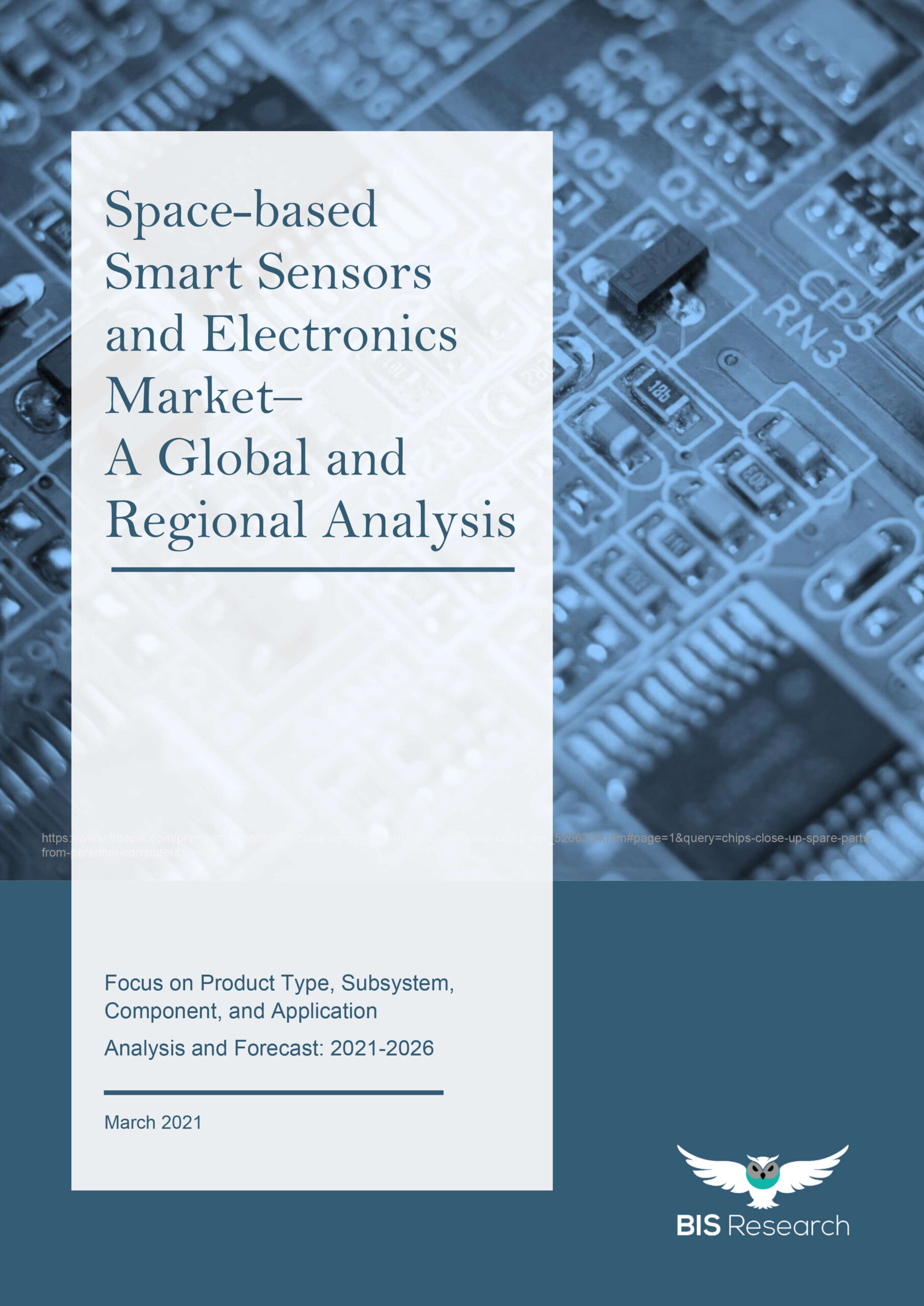Description
Space-based Smart Sensors and Electronics Market
Key Questions Answered in this Report:
• What are the major drivers, challenges, and opportunities for the global space-based smart sensors and electronics market during the forecast period 2021-2026?
• In which industries (satellite, launch vehicle, and deep space probe) will space-based smart sensors and electronics components have the greatest impact in the near-term?
• What are the recent trends in the space-based smart sensors and electronics segment?
• Which are the key players in the global space-based smart sensors and electronics market, and what is their competitive benchmarking?
• What is the expected revenue generated by the global space-based smart sensors and electronics market during the forecast period 2021-2026?
• What are the strategies adopted by the key players in the market to increase their market presence in the industry?
• Which application (satellite, launch vehicle, and deep space probe) in the space-based smart sensors and electronics market is expected to dominate the market in 2026?
• What was the revenue generated by the global space electronics market (by component) for active component (integrated circuit, microprocessor and microcontroller, active sensors, optoelectronics), passive component (capacitors and supercapacitors, resistors, attenuators, RF passive components, inductors, and transformers), electrical power system, memory, and analog and mixed signal in 2020, and what are the estimates till 2026?
• What was the revenue generated by the global space-based smart sensors and electronics market (by subsystem) – satellite bus and payload in satellites, and avionics and power system in launch vehicles and deep space probes in 2020, and what are the estimates till 2026?
• What was the revenue generated by the global space electronics market (by product) (radiation-hardened and radiation-tolerant) in 2020, and what are the estimates till 2026?
• What are the competitive strengths of the key players in the space-based smart sensors and electronics market?
• What would be the aggravated revenue generated by the space-based smart sensors and electronics market segmented by region (North America, Europe, Asia-Pacific, and Rest-of-the-World) till 2026?
Global Space-Based Smart Sensors and Electronics Market Forecast, 2021-2026
The space-based smart sensors and electronics industry analysis by BIS Research projects the market to have significant growth of CAGR 4.85% during the forecast period 2021-2026. North America is expected to dominate the global space-based smart sensors and electronics market with an estimated share of 44.72% in 2026.
North America, including the major countries such as the U.S., is the most prominent region for the space-based smart sensors and electronics market. The presence of major players and intense competition among them makes North America the most technologically advanced region.
The global space-based smart sensors and electronics market is gaining widespread importance owing to the rising demand for small satellites, and the increasing reliability and functionality of launch vehicles and deep space probes. Moreover, the increased utilization of the commercial-of-the-shelf (COTS) component is one of the key factors that may propel the market growth in the coming years.
Scope of the Global Space-Based Smart Sensors and Electronics Market
The purpose of the market analysis is to examine the space-based smart sensors and electronics market outlook in terms of factors driving the market, trends, technological developments, and competitive benchmarking, among others.
The report further takes into consideration the market dynamics and the competitive landscape of the key players operating in the market.
Global Space-Based Smart Sensors and Electronics Market Segmentation
The report constitutes an extensive study of the space-based smart sensors and electronics industry. The report largely focuses on providing market information for space-based smart sensors and electronics covering various segments and regions. The space-based smart sensors and electronics market is segmented on the basis of product type, application, subsystem, component, application, and region.
While highlighting the key driving and restraining forces for this market, the report also provides a detailed study of the industry. The report analyzes different applications that include satellite, launch vehicle, and deep space probe. The product type segment is segmented into radiation-hardened and radiation-tolerant.
Also, the sub-system segment is segmented into satellite (payload, satellite bus), launch vehicle (avionics, power system) and deep space probe (avionics, power system).
On the basis of component, the market is segmented into active component (integrated circuit, microprocessor and microcontroller, active sensors, optoelectronics), passive component (capacitors and supercapacitors, resistors, attenuators, RF passive components, inductors, and transformers), electrical power system, memory, and analog and mixed signal.
The space-based smart sensors and electronics market is segregated into four major regions, namely North America, Europe, Asia-Pacific, and Rest-of-the-World. Data for each of these regions, along with country-level analyses, is provided in the market study.
Key Companies in the Global Space-based Smart Sensors and Electronics Industry
The key market players in the global space-based smart sensors and electronics market include Analog Device Inc, BAE Systems, Cobham plc, Data Device Corporation, Exxelia, Honeywell International, Infineon Technologies, Microchip, Micropac, Teledyne Technologies, Texas Instruments Inc., The Boeing Company, Xilinx Inc., STMicroelectronics N.V, TT Electronics, and Solid-State Devices Inc.
Global Aerospace Lubricant Market Analysis and Forecast Report 2030





Reviews
There are no reviews yet.